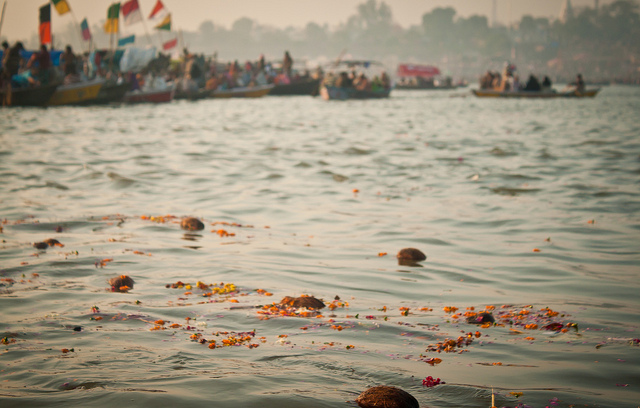
Scene one, pertaining to promises to clean and revive the Ganga is over. The country is now watching the more complex and challenging scene two unfold. The challenge is for those who are directly involved in fulfilling the promise made by India's fifteenth Prime Minister, Narendra Modi.
It may be recalled that in 1985, when Rajiv Gandhi launched the Ganga Action Plan, the country hoped that the initiative will bring change, clean the river, improve its environment, revive its flow and bestow its past glory. The Government of India (GOI) spent nearly Rs. 27,000 crore in the past 29 years but the river deterioration continues. GoI, in 2009, declared the Ganga as a National River and constituted the Ganga River Basin Authority but even five years after its constitution, the authority has failed to bring about the expected change.
The holy river continues to flow carrying filth, pollutants, hazardous chemicals etc. The investment on the development of sewer networks, sewage treatment plants, electric crematoria and community toilets has not yielded the desired results. In this context, it is logical to argue that without a paradigm policy shift and without a new road map, the new project is uncalled for. We must learn from our past mistakes. This appears to be the real challenge before the newly formed Water Resource, River Development and Ganga Rejuvenation Ministry. It needs to take into account the entire canvas of river science before it formulates another action plan.
How does a river system work?
It is interesting to understand the river system vis-a-vis the unnoticed role of the hydrological cycle. The hydrological cycle or water cycle is a process by which water travels from the surface (ocean) to atmosphere by changing its state of matter from solid to liquid to gas form. Every year flowing monsoon waters (part of the hydrological cycle) clean the entire river basin, remove the unwanted material and hand it over to river system for further removal into the sea. In non-monsoon season, ground water flowing in rivers, removes the dissolved chemicals from the upper layer of the earth - home for water table aquifers. This is the function or natural responsibility of a river. This responsibility requires flood waters for removal of sand, silt, gravel, rock fragments, weathered material etc and groundwater contribution in the form of non-monsoon flow to remove dissolved chemicals.
What should the Ministry do?
The River Development and Ganga Rejuvenation Ministry should conceive, frame and declare a National River Policy. River revival schemes should be framed on the vision provided by the river policy. In the past, schemes and action plans have been undertaken without a long term vision. The Ministry could call for the draft and finalize it in next three months.

The Ministry should prepare a Polluters Directory for every 10 km river stretch. It can adopt five tier river code detailed in the National Watershed Atlas. This will cover all rivers of the country, save time and money. The Polluters Directory could be shared in a public domain to invite alterations / additions. Panchayat Raj Institutions (PRIs), citizens and NGO's could also be involved in updating the Directory.
Pollution, even in smallest river, is removed during the rainy season. The Ministry has to check pollution only in non-monsoon months. Rules, policies and Acts empower the Ministry to take appropriate steps to curb pollution through appropriate nodal institutions. After ensuring desired arrangements, polluters should be allowed to release treated water only after meeting their own water requirements. Arrangements for chemical and biological analysis may be ensured by polluter and independent agencies in the river system. Regular arrangement for monitoring the quality of the treated water should be put in place. The Ministry could think of a Report Card System, which will put achievements in a public domain to demonstrate river governance.
Pollution remedial measures can be made effective and sustainable by good governance. Pollution control could follow river revival or both can run simultaneously. Revival of river stretches will not serve the purpose. One needs to revive entire river basin to ensure minimum flow availability for sustenance and discharge of river function. This goal cannot be achieved by linking rivers or by lift schemes.
Conclusion
River revival is a complex phenomenon. It is observed that the river flow is sustained till the groundwater table is above its bed level. As soon as the regional water table declines below the rivers bed level, the river dries up. It is generally observed that the river dries initially near the origin and then progressively in the larger hydrologic units. The decline of the water table is a cumulative effect of various factors and therefore will require simultaneous management. Climate change management will also be part of the approach. Therefore, before undertaking schemes for flow augmentation, the Ministry should conceive, prepare and finalize an approach paper and then act.
K. G. Vyas was a former consultant for Rajiv Gandhi Drinking Water Mission in Madhya Pradesh & a well known writer on Environmental issues. He is a geologist. The views expressed in this article are personal and should not be read as those of IWP or Arghyam.
Image source (The River Ganga) - By Praveena Shridhar